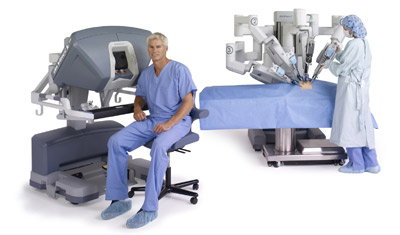Robotic-assisted radical prostatectomy is a minimally invasive procedure used to surgically remove the prostate gland and surrounding tissue in cases of prostate cancer. This operation is performed using advanced robotic technology, with the goal of completely removing the cancer while minimising surgical trauma.
Dr Jimmy Lam is highly experienced in performing robotic prostatectomies using the state-of-the-art da Vinci Surgical System. Dr Lam provides fully personalised care and will discuss all treatment options with you, including your suitability for robotic-assisted surgery.
Who is suitable for robotic-assisted radical prostatectomy?
This procedure is generally recommended for men with a life expectancy of more than 8–10 years and whose cancer meets the following criteria:
- Confined to the prostate (i.e. no evidence of spread outside the gland)
- Clinically significant cancer likely to affect health or life expectancy
- In good overall health to tolerate surgery
- Prefer definitive treatment, with the reassurance that the cancerous prostate has been completely removed
Advantages of robotic-assisted surgery
Robotic-assisted prostatectomy offers several advantages over traditional open surgery:
- Smaller incisions and less scarring
- Reduced blood loss
- Shorter hospital stay
- Faster recovery time
- Reduced postoperative pain
- High-definition 3D visualisation for the surgeon
- Greater precision, dexterity, and control through robotic instruments
How is the procedure performed?
The surgery involves the following steps:
- General anaesthesia is administered.
- Several small incisions are made in the abdomen.
- The abdomen is inflated with carbon dioxide gas to create space for the surgeon to operate.
- Robotic instruments and a high-definition camera are inserted through the incisions.
- The prostate gland and seminal vesicles are carefully removed.
- Lymph nodes may also be removed if the cancer is considered high-risk.
- The urethra is reconnected to the bladder (anastomosis).
- Instruments are removed, gas is released, and incisions are closed with care to reduce the risk of hernia or scarring.
What to expect after surgery
- Patients typically remain in hospital for 2–3 nights.
- Mild pain or discomfort is common and managed with medications.
- Early mobilisation is encouraged: sitting up, walking, and breathing exercises help reduce the risk of blood clots or lung complications.
- A urinary catheter will stay in place for 10–14 days to allow healing.
- Minor leakage of urine or blood-stained discharge around the catheter is normal.
- Rare complications include:
- Injury to nearby organs or blood vessels
- Incisional hernia
Important: Do not allow anyone to remove or adjust your catheter without prior approval from your surgeon.
Returning to normal activities
- Driving: Avoid for at least 2 weeks
- Work: Time off will vary depending on your job
- Lifting: No heavy lifting or straining for 4 weeks
- Exercise: Walking is encouraged; avoid strenuous activity (gym, running, swimming, cycling, golf) for 4 weeks
- Sexual activity: Avoid for 4 weeks
If you have any concerns after discharge, contact our rooms or hospital ward. After hours, reach out to the ward nurse or attend your local emergency department—staff can contact your surgeon if necessary.

